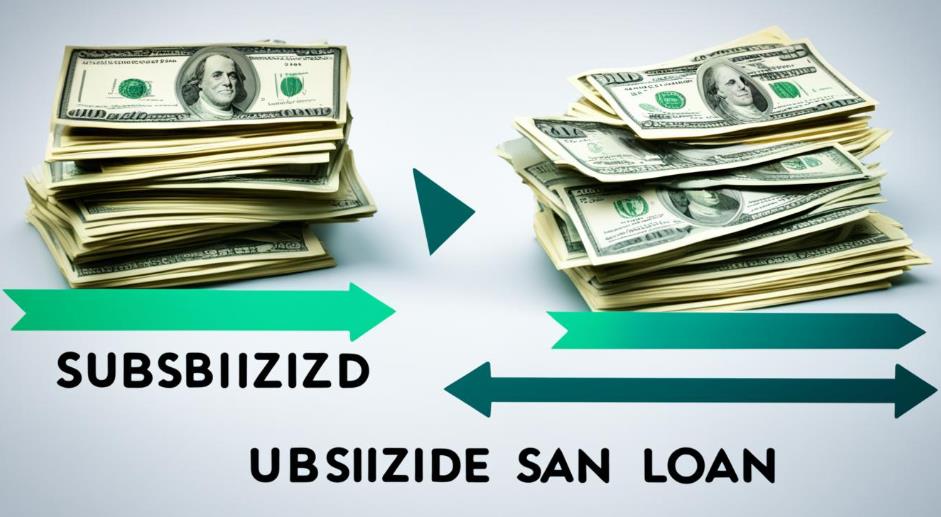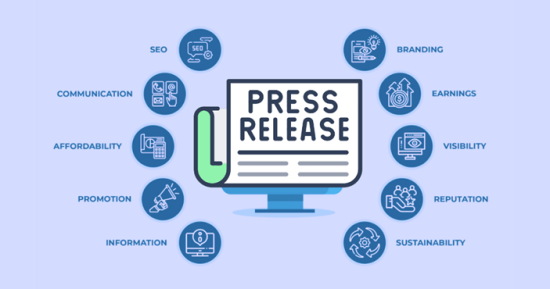
When it comes to financing your education, you may have heard of subsidized and unsubsidized loans, but do you know the key differences between them? Both types of loans are offered by the federal government and come with low-interest rates, but that’s where the similarities end. Understanding the disparities between subsidized and unsubsidized loans is essential for making informed decisions about your student loan options.
In this article, we will explore what is the difference between subsidized and unsubsidized loans, shedding light on interest accumulation, eligibility criteria, and loan limits. By the end, you’ll have a comprehensive understanding of which type of loan best suits your financial situation and educational needs.
Let’s dive in and unravel the mystery behind subsidized and unsubsidized loans. Are you ready to discover the differences that could impact your future?
Understanding Federal Student Loans: Subsidized vs. Unsubsidized
When it comes to financing your college education, federal student loans are an important resource to consider. These loans can help cover the cost of tuition, books, and living expenses, making higher education more accessible for many students. However, it’s crucial to understand the different types of federal student loans available, particularly the distinctions between subsidized and unsubsidized loans.
Basics of Federal Student Aid
Before delving into the specifics of subsidized and unsubsidized loans, let’s start with the basics of federal student aid. The U.S. Department of Education offers various types of financial assistance to help students pay for their education, including grants, work-study programs, and loans. Federal student loans, in particular, can be a valuable tool in financing your education.
Unlike private loans, federal student loans are typically more flexible and offer lower interest rates. They also come with certain borrower protections and repayment options that can provide relief in times of financial hardship.
Eligibility for Federal Loans
Eligibility for federal student loans is based on several factors, including financial need and enrollment status. To apply for federal student aid, you must complete the Free Application for Federal Student Aid (FAFSA) form. This form collects information about your family’s income, assets, and other financial details, which the Department of Education uses to determine your eligibility for different types of aid, including loans.
It’s important to note that both subsidized and unsubsidized loans are available to undergraduate, graduate, and professional students. However, the eligibility criteria and loan limits may vary depending on the student’s academic level and financial need.
| Loan Type | Undergraduate Students | Graduate and Professional Students |
|---|---|---|
| Subsidized Loans | Based on financial need Interest paid by the government while in school |
Not available |
| Unsubsidized Loans | Available regardless of financial need Interest accrues while in school |
Available regardless of financial need Interest accrues while in school |
The table above provides a summary of the main differences between subsidized and unsubsidized loans for undergraduate and graduate/professional students. Subsidized loans are exclusively available to undergraduate students based on financial need, and the government pays the interest while the borrower is enrolled in school. Unsubsidized loans, on the other hand, are available to both undergraduate and graduate/professional students, regardless of financial need, but the borrower is responsible for paying the accruing interest.
Understanding the basics of federal student loans and the differences between subsidized and unsubsidized options is crucial for making informed decisions about financing your education. In the following sections, we will explore the nuances of interest accumulation and loan limits for each type of loan, equipping you with the knowledge necessary to navigate the world of student loans.
Interest Accumulation: Subsidized and Unsubsidized Loans Explained
When it comes to student loans, understanding how interest accumulation works is essential. In this section, we will explore the difference between interest on subsidized loans and interest on unsubsidized loans, shedding light on the implications for borrowers like you.
Interest-Free Periods in Subsidized Loans

Subsidized loans offer an advantage through interest-free periods. This means that while you’re enrolled in school at least half-time, during your grace period, and if you defer your loan payments, interest does not accrue. This is a significant benefit, as it prevents your loan balance from growing during these periods, ultimately saving you money in the long run.
For example, let’s say you borrow $10,000 in subsidized loans during your undergraduate studies. If you defer repayment for four years, you won’t accumulate any interest during that time. This means that when you enter repayment, your loan balance will still be $10,000, saving you from the burden of additional interest charges.
It’s important to note that the interest-free periods on subsidized loans have certain limitations. Once you graduate, withdraw from school, or drop below half-time enrollment, the interest-free benefit ends, and interest begins accumulating.
Immediate Interest on Unsubsidized Loans
In contrast, unsubsidized loans start accumulating interest from the moment they are disbursed. This means that while you’re in school, the interest on your loan is already adding to your total balance. Consequently, you will end up owing more than the initial loan amount by the time you enter repayment.
Let’s illustrate this with an example. Suppose you take out a $10,000 unsubsidized loan and attend school for four years. With an annual interest rate of 5%, your balance at the end of your studies would be approximately $12,166. This calculation includes the interest that accumulated while you were in school. As a result, you’ll have to repay this higher amount, which includes both the principal and the interest that has already accrued.
This difference in interest accumulation between subsidized and unsubsidized loans highlights the importance of carefully considering your options. While the immediacy of interest on unsubsidized loans might seem daunting, these loans offer greater flexibility in terms of eligibility criteria and loan limits.
| Subsidized Loans | Unsubsidized Loans | |
|---|---|---|
| Interest Accumulation | Does not accumulate while enrolled in school, during grace periods, or if payments are deferred. | Begins accruing immediately after loan disbursement. |
| Impact on Loan Balance | Helps keep the loan balance from growing during certain periods, ultimately saving borrowers money. | Contributes to a higher loan balance by the time repayment begins. |
| Eligibility Criteria | Based on financial need as determined by the Free Application for Federal Student Aid (FAFSA). | Not based on financial need; available to all eligible students. |
| Loan Limits | Lower borrowing limits compared to unsubsidized loans. | Higher borrowing limits compared to subsidized loans. |
How Loan Limits Differ for Subsidized and Unsubsidized Options?
When considering federal student loans, it is important to understand the loan limits that are associated with both subsidized and unsubsidized options. Loan limits determine the maximum amount of money that you can borrow to help finance your education.
The loan limits for subsidized and unsubsidized loans differ based on various factors, including the student’s dependency status, grade level, and whether they are pursuing an undergraduate or graduate degree. These limits are set by the U.S. Department of Education and can vary from year to year.
To provide you with a clear understanding of these differences, the following table illustrates the loan limits for different categories of students:
| Student Category | Subsidized Loan Limits | Unsubsidized Loan Limits |
|---|---|---|
| Dependent Undergraduates | $5,500 – $7,500 per year | $2,000 – $5,000 additional per year |
| Independent Undergraduates | $9,500 – $12,500 per year | $2,000 – $6,000 additional per year |
| Graduate and Professional Students | N/A | $20,500 per year |
Note: The loan limits provided in the table are for the 2021-2022 academic year and are subject to change. It is important to check the current loan limits on the official website of the U.S. Department of Education.
Understanding the loan limits for subsidized and unsubsidized loans is crucial in planning your financial aid strategy. These limits determine the maximum amount of money you can borrow and can influence your decision-making process when it comes to financing your education.
Comparing Subsidized and Unsubsidized Loan Borrowing Limits
When it comes to borrowing money for your education, it’s important to understand the limits that apply to different student loan options. In this section, we will compare the borrowing limits for subsidized and unsubsidized loans, exploring the loan amounts available for dependent undergraduates, independent undergraduates, and graduate or professional students.
Loan Limits for Dependent Undergraduates
Dependent undergraduate students have specific borrowing limits for both subsidized and unsubsidized loans. The maximum annual loan limit for first-year dependent undergraduates is currently $5,500, with a maximum of $3,500 in subsidized loans. For second-year students, the maximum annual limit increases to $6,500, with a maximum of $4,500 in subsidized loans. Finally, for third-year and beyond, the maximum annual limit stands at $7,500, with a maximum of $5,500 in subsidized loans.
Loan Limits for Independent Undergraduates
Independent undergraduate students, including those who are married or have dependents, can access higher borrowing limits compared to their dependent counterparts. The maximum annual loan limit for first-year independent undergraduates is currently $9,500, with a maximum of $3,500 in subsidized loans. Second-year independent students can borrow up to $10,500 annually, with a maximum of $4,500 in subsidized loans. And for third-year and beyond, the maximum annual limit is $12,500, with a maximum of $5,500 in subsidized loans.
Loan Limits for Graduate and Professional Students
Graduate and professional students also have their own borrowing limits for subsidized and unsubsidized loans. The maximum annual loan limit for graduate or professional students is currently $20,500, with no subsidized loan option available. However, there are additional loan programs available specifically for graduate and professional students, such as the Graduate PLUS Loan, that can provide additional funding beyond the standard borrowing limits.
Understanding the borrowing limits for subsidized and unsubsidized loans is crucial for planning and managing your student loan debt. By being aware of the loan amounts available for your category, you can make informed decisions and ensure that you have the necessary funds to cover your educational expenses.
The Importance of Interest: What You Need to Know

Understanding interest in student loans is crucial for making informed financial decisions. Interest plays a significant role in determining the total amount you owe and the repayment timeline. By grasping the impact of interest on loan repayment, you can effectively manage your student debt and minimize unnecessary costs.
Interest rates are a key factor in calculating the cost of borrowing. They determine the percentage of the loan amount that you’ll need to repay in addition to the principal. It’s important to comprehend the difference between fixed and variable interest rates. Fixed rates remain the same throughout the loan term, providing stability and predictability. On the other hand, variable rates fluctuate based on market conditions, which can lead to changes in your monthly payments.
One of the most significant consequences of interest on loan repayment is the extended timeline for paying off your debt. Accumulated interest can significantly increase your loan balance over time, making it crucial to develop a strategy for repayment. By minimizing interest costs, you can save thousands of dollars in the long run.
Managing your interest costs starts with timely payments. Making your monthly payments on time ensures that interest doesn’t accrue unnecessarily, reducing the overall amount you owe. Additionally, consider making extra payments whenever possible to further reduce your principal balance and lower the amount of interest that accumulates over time.
Another strategy to minimize interest costs is to explore loan refinancing or consolidation options. By refinancing your student loans, you may be able to secure a lower interest rate, which can save you money over the life of the loan. Consolidation allows you to combine multiple loans into one, simplifying your repayment process and potentially reducing your interest rate.
Understanding the importance of interest in student loans can help you make informed choices about borrowing and repayment. By managing interest costs and adopting effective repayment strategies, you can navigate your student debt more efficiently and achieve financial success in the long term.
| Key Takeaways |
|---|
| Interest rates play a significant role in determining the total amount owed on a student loan. |
| Understanding the difference between fixed and variable interest rates is essential. |
| Accumulated interest can significantly increase the loan balance over time. |
| Timely payments and additional payments can help minimize interest costs. |
| Exploring loan refinancing and consolidation options can potentially reduce interest rates. |
Strategic Borrowing: Choosing Between Subsidized and Unsubsidized Loans
When it comes to financing your education, choosing between subsidized and unsubsidized loans requires careful consideration. Strategic borrowing involves evaluating various factors to make informed decisions that align with your financial goals and circumstances. To help you navigate this decision-making process, here are some key points to consider:
When to Choose a Subsidized Loan
If you demonstrate financial need, a subsidized loan may be the ideal choice. The government pays the interest on subsidized loans while you are in school at least half-time, during deferment periods, and in some cases, during the grace period. This interest-free period can significantly reduce your overall loan cost.
Before accepting a subsidized loan, consider the amount of financial aid you qualify for based on your FAFSA (Free Application for Federal Student Aid) results. Sometimes, the amount awarded may not cover your full financial need. In such cases, it may be necessary to consider a combination of subsidized and unsubsidized loans to bridge the gap and meet your educational expenses.
Accepting Unsubsidized Loans: What You Should Consider
While unsubsidized loans accrue interest throughout the life of the loan, they offer more flexibility in terms of eligibility and borrowing limits. Unlike subsidized loans, unsubsidized loans are not based on financial need, meaning you can potentially borrow more to cover the full cost of your education.
When considering unsubsidized loans, it’s crucial to factor in the interest that will accumulate. Think about your long-term financial capabilities and your ability to make interest payments while in school or deferment. Keep in mind that although interest accrues, you have the option to defer payments until after graduation.
It’s essential to carefully evaluate your financial situation, future employment prospects, and repayment plans when deciding to accept an unsubsidized loan. Taking into account your anticipated income and potential monthly payments, develop a realistic plan to manage your loan obligations effectively.
Ultimately, the choice between subsidized and unsubsidized loans depends on your individual circumstances and goals. Consider your financial need, expected income, repayment timeline, and long-term financial plans. Strategic borrowing involves making an informed decision by weighing these factors and understanding the implications of each loan type.
| Factors to Consider | Subsidized Loan | Unsubsidized Loan |
|---|---|---|
| Financial Need | Considerable impact | Not a deciding factor |
| Interest Accrual | Government pays interest during certain periods; interest-free periods available | Interest accrues throughout the life of the loan |
| Eligibility | Based on financial need and other factors | Not based on financial need |
| Borrowing Limits | May have restrictions on the maximum amount borrowed | Higher borrowing limits |
| Repayment Flexibility | Potential for more manageable repayment plans | More flexibility to borrow a larger amount |
What is the Difference Between Subsidized and Unsubsidized Loans?

In order to fully understand the differences between subsidized and unsubsidized loans, it is important to delve into the two key aspects: defining interest responsibility and understanding financial need for loan qualification.
Defining Interest Responsibility
When it comes to subsidized loans, the government takes on the responsibility of paying the accrued interest on the loan while the borrower is still in school, during deferment periods, and certain grace periods. This means that interest does not accumulate during these designated periods, relieving the borrower of the burden of paying interest during these times. However, it is essential to note that once repayment begins, the borrower becomes responsible for paying the accrued interest.
On the other hand, unsubsidized loans do not offer the same interest relief. With unsubsidized loans, interest begins accruing from the moment the loan is disbursed. This means that the borrower is responsible for paying the accrued interest throughout the entire life of the loan, including while in school, during deferment periods, and grace periods. Any unpaid interest is capitalized, meaning it is added to the principal balance of the loan, increasing the total amount owed.
Understanding Financial Need for Loan Qualification
Another significant difference between subsidized and unsubsidized loans lies in the role of financial need for loan qualification. Subsidized loans are awarded based on financial need, as determined by the information provided on the Free Application for Federal Student Aid (FAFSA). Financial need is determined by assessing factors such as income, assets, family size, and the cost of attendance at the school. Eligibility for subsidized loans is limited to students who demonstrate sufficient financial need.
On the other hand, unsubsidized loans do not require a demonstration of financial need. Eligibility for unsubsidized loans is not based on income or financial need, making these loans more accessible to a wider range of students. However, it is important to remember that regardless of financial need, unsubsidized loans still require repayment of the accrued interest once the loan enters repayment.
To summarize, the difference between subsidized and unsubsidized loans lies in the responsibility for paying the accrued interest and the role of financial need in loan qualification. Subsidized loans offer interest relief during designated periods, but the borrower becomes responsible for paying the accrued interest once repayment begins. Financial need plays a crucial role in qualifying for subsidized loans, while unsubsidized loans do not require a demonstration of financial need. Understanding these differences is essential in making informed decisions about financing education and managing student loan debt.
Repayment Strategies for Student Loans: Subsidized vs. Unsubsidized

When it comes to repaying your student loans, it’s essential to have a plan in place. Whether you have subsidized or unsubsidized loans, understanding repayment strategies can help you effectively manage your debt and achieve financial freedom.
Prioritizing Loan Repayments
One of the first steps in creating a repayment strategy is prioritizing your loan repayments. This involves assessing your loan types, interest rates, and repayment options to determine which loans to focus on first.
If you have both subsidized and unsubsidized loans, start by examining the interest rates. Prioritize loan repayments by tackling the loans with the highest interest rates first. By paying off high-interest loans sooner, you can reduce the overall amount of interest you’ll pay over the life of your loans.
Additionally, consider the repayment terms and options for each loan. Some loans may offer income-driven repayment plans, which can provide more manageable monthly payments based on your income and family size. By exploring these options and choosing a repayment plan that fits your financial situation, you can make your loan payments more affordable.
Repayment Planning for Different Loan Types
Another crucial aspect of developing a repayment strategy is planning for different loan types. This involves understanding the unique features and requirements of each loan and adjusting your repayment plan accordingly.
For subsidized loans, take advantage of their interest-free periods while you are enrolled in school and during grace periods. Consider allocating extra funds towards your unsubsidized loans first before these interest-free periods end, as unsubsidized loans start accruing interest immediately. By paying down the interest on unsubsidized loans early, you can minimize the interest capitalization and reduce your overall loan balance.
Additionally, if you have multiple loan types, such as federal and private loans, evaluate the different repayment options and terms for each. Private loans may have different interest rates and repayment terms than federal loans, so it’s vital to factor these differences into your repayment plan.
To help you visualize your repayment strategy and track your progress, consider creating a repayment plan spreadsheet. This will allow you to see how your payments are reducing your loan balances over time and motivate you to stay on track towards becoming debt-free.
Remember, everyone’s financial situation is unique, so it’s essential to customize your repayment strategy based on your individual circumstances. Consider consulting a financial advisor or a student loan expert to get personalized guidance and recommendations tailored to your specific needs.
Subsidized vs. Unsubsidized Loans: Pros, Cons, and Considerations
When choosing between subsidized and unsubsidized loans, it’s important to weigh the pros and cons of each option. Subsidized loans offer several benefits, including interest subsidies, which means the government covers the interest that accrues while you’re in school or during certain grace periods. This can help reduce the overall cost of your loan. Additionally, subsidized loans are need-based, so if you demonstrate financial need, you may qualify for this type of loan.
On the other hand, unsubsidized loans provide greater flexibility. They are not need-based, which means you can qualify for them regardless of your financial situation. While interest begins accruing immediately on unsubsidized loans, you have the option to pay it while you’re still in school or defer it until after graduation. This gives you more control over managing your loan’s interest. Unsubsidized loans also have higher borrowing limits, making them suitable for students who need to access additional funds for their education.
When selecting a loan type, it’s crucial to consider your individual circumstances and financial goals. If you have a high financial need and are eligible for a subsidized loan, it could be an attractive option due to the interest subsidies. However, if you have the means to pay the interest or prefer the flexibility of deferring it, an unsubsidized loan might be more suitable for you. Furthermore, consider factors such as your future income potential and job prospects, as well as your ability to make timely repayments.
In conclusion, subsidized and unsubsidized loans each have their own advantages and disadvantages. It’s essential to carefully evaluate your financial situation, educational needs, and long-term goals when making a decision. By taking these factors into account and understanding the pros and cons of each loan type, you can make an informed choice that aligns with your financial needs and sets you up for success during your educational journey.
FAQs on What is the Difference Between Subsidized and Unsubsidized Loans
What is the difference between subsidized and unsubsidized loans in terms of interest?
The critical difference is that with subsidized loans, the government pays the interest while you’re in school at least half-time or during the grace period, and during deferment periods. In contrast, with unsubsidized loans, interest accrues when the loan is disbursed.
What is the difference between subsidized and unsubsidized loans in terms of eligibility?
Subsidized loans are need-based, meaning you must demonstrate financial need to qualify, whereas unsubsidized loans are easily available to all students regardless of financial need.
What is the difference between subsidized and unsubsidized loans in terms of repayment?
With subsidized loans, you don’t have to worry about interest accruing while in school, making repayment more manageable. In contrast, unsubsidized loans accumulate interest during all periods, increasing the total amount to be repaid.
What is the difference between subsidized and unsubsidized loans regarding loan limits?
Both types of loans have annual and aggregate limits, but the total amount you can borrow in subsidized loans is typically lower than the amount available for unsubsidized loans.
What is the difference between subsidized and unsubsidized loans concerning who can borrow?
Undergraduate students can get subsidized and unsubsidized loans, but graduate and professional students are only eligible for unsubsidized loans.








